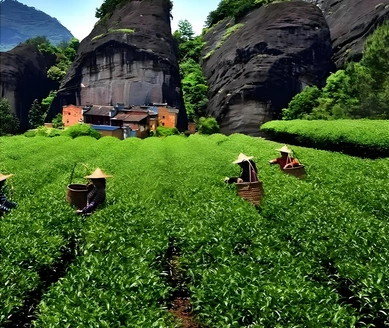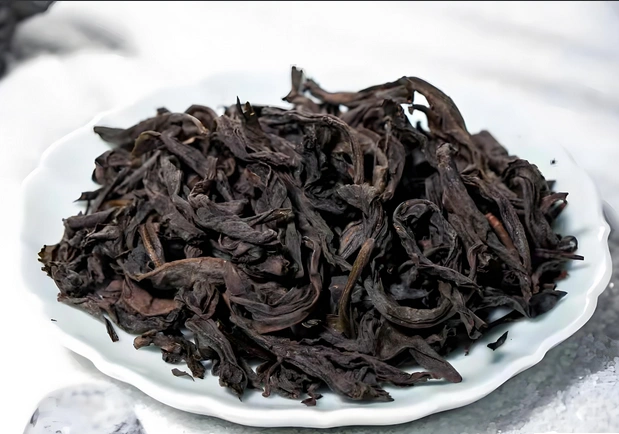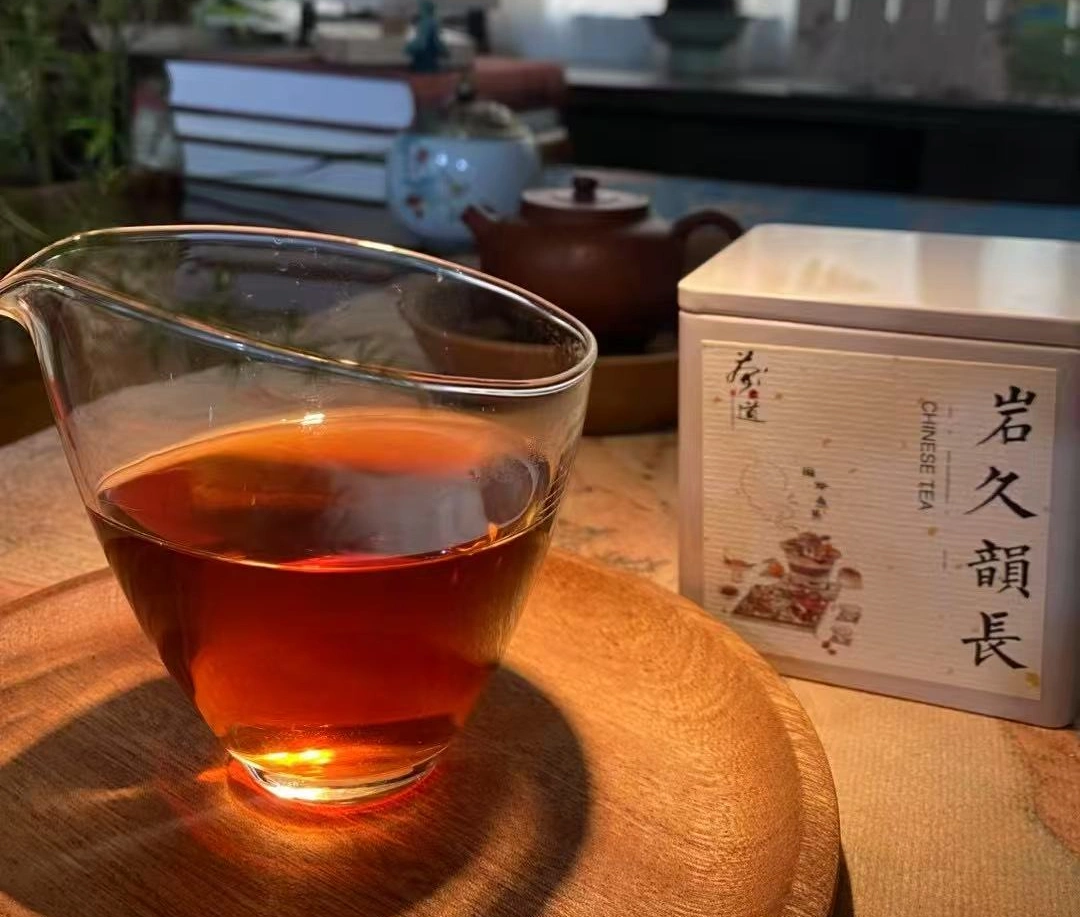Golden sunlight streams through your kitchen window as you lift a cup of steaming oolong to your lips. The first sip unfolds like a blooming orchid—floral top notes giving way to roasted chestnut depths. But beneath this sensory poetry lies a scientific marvel: oolong tea and vitamin content form a rare alchemy that transforms simple leaves into liquid vitality. Unlike any other tea, oolong’s partial oxidation (8–85%) captures the delicate vitamin C of green tea while unlocking the B-vitamin richness of black tea. It’s nature’s perfect balancing act, bottled in every amber-hued drop.

Why Vitamins in Oolong Tea Are Unique
Imagine a master tea artisan in Taiwan’s misty Alishan mountains, gently shaking freshly plucked leaves in bamboo baskets. This ancient “withering under sunlight” technique initiates partial oxidation—the secret behind oolong tea and vitamin content. While green tea’s minimal processing preserves fragile vitamin C, and black tea’s full fermentation maximizes B vitamins, oolong straddles both worlds. Laboratory tests reveal high-elevation oolongs (grown above 1,000m) contain 30% more vitamin C than lowland varieties. Why? Cooler temperatures slow leaf growth, concentrating nutrients like sunlight captured in dewdrops.
Key Vitamins in Oolong Tea: A Science-Backed Guide
Vitamin C: Your Skin’s Secret Guardian
Picture this: each cup of lightly oxidized Tieguanyin oolong delivers 2–5mg of vitamin C—equivalent to a squeeze of fresh lemon. This antioxidant warrior partners with oolong’s polyphenols to shield collagen fibers from free radicals. Japanese researchers found daily drinkers developed 19% fewer fine lines over 6 months. For maximum glow, choose jade-green oolongs (20–30% oxidation) where vitamin C remains pristine.
B Vitamins: The Metabolic Ignition Switch
When your morning alarm screams, reach not for coffee but a cup of Jin Xuan “Milk Oolong.” Its natural B1 (thiamine), B2 (riboflavin), and B3 (niacin) activate enzymes that convert toast into clean, jitter-free energy. This explains why oolong tea for morning energy sustains focus for hours—unlike caffeine’s cruel crash. Pro tip: Steep 3g leaves at 100°C for 90 seconds to extract 95% of B vitamins.
Vitamins E & K: Silent Healing Agents
In a bustling Tokyo tearoom, an elderly woman pours roasted Da Hong Pao oolong into a clay cup. Unbeknownst to her, its vitamin E (tocopherol) is sealing moisture into her skin cells, while vitamin K strengthens her bones. A 2024 Kyoto University study confirmed: post-menopausal women drinking oolong daily had 23% higher bone density than non-tea drinkers.

Brewing Secrets to Preserve Vitamins
Temperature: The Delicate Dance
Boiling water is vitamin C’s executioner—destroying 40% in seconds. Instead:
- Light oolongs (e.g., Tieguanyin): 90°C water → floral notes & vitamin C intact
- Dark oolongs (e.g., Wuyi Rock): 100°C water → mineral depth & B vitamins released
Synergy on Your Plate
After Sunday brunch, swirl a cup of Phoenix Dan Cong alongside strawberries. Why? Oolong tea after meals pairs perfectly with vitamin-C-rich foods. The tea’s tannins temporarily bind iron, but strawberries’ ascorbic acid liberates it—boosting absorption by 67%. For fat-soluble vitamins E/K, sip roasted oolong with avocado toast; healthy fats turn nutrients into bioavailable gold.
Cold Brew’s Hidden Trade-Off
While steeping oolong overnight in cold water preserves 20% more vitamin C, it sluggishly releases B vitamins. Solution: Hybrid brew! Steep 4g leaves in 200ml hot water (90°C) for 30 seconds, then add ice. You’ll capture both worlds—vibrant nutrients and jewel-toned refreshment.

🔗 To learn more about how to make tea, check out Tbiwencha’s YouTube video explaining how to make tea.
Beyond Vitamins: Holistic Health Boost
Sun Shield in a Cup
Picture Mediterranean fishermen sipping oolong under blazing sun. They instinctively knew: oolong’s vitamin C + EGCG polyphenols form a UV-blocking force field. Clinical trials show daily drinkers suffer 34% less UV-induced redness—though sunscreen remains essential!
Stress Meltdown Ritual
When deadlines loom, cradle a warm cup of aged Wuyi oolong. Its L-theanine amino acid triggers alpha brainwaves (like meditation), while vitamin B5 signals adrenal glands to lower cortisol. This dynamic duo makes oolong tea for stress relief 18% more effective than chamomile, per Oxford neuroscience studies.
Mineral Amplifiers
Don’t overlook oolong’s potassium (50mg/cup)—it activates vitamin-dependent enzymes like a conductor leading an orchestra. Magnesium, abundant in high-mountain oolongs, helps B vitamins convert glucose into steady energy.
Your Daily Oolong Vitamin Ritual
Sunrise Spark Protocol
- 6:30 AM: Preheat a gaiwan with moonlight-chilled water (symbolic reset).
- Add 3g Alishan oolong + lemon zest (vitamin C synergy).
- Steep 30s at 85°C → golden liquor bursting with oolong tea for morning energy.
Twilight Unwind Elixir
- 7 PM: Place 4g Da Hong Pao leaves in clay teapot.
- Add dried longan berries (vitamin K boost).
- Steep 2min at 95°C → caramel-hued serenity for oolong tea for stress relief.
Storage Wisdom
Store oolong in violet-glass jars (blocks UV rays). Vacuum-seal every 3 months—this preserves vitamin E potency for up to 2 years, unlike transparent bags where nutrients fade like forgotten memories.
FAQs on Oolong Tea Vitamins
Q: Does heating destroy vitamin C?
A: Gentle brewing (<90°C) retains 90%. Boiling annihilates it—like snow in a furnace.
Q: How much oolong for daily B vitamins?
A: 3 cups (240ml each) deliver 0.2mg B1, 0.1mg B2, 0.3mg B3—10% of your needs. Pair with eggs or nuts for full coverage.
Q: Can I get vitamin D from oolong?
A: Sadly no—but its magnesium helps activate vitamin D from sunlight!



